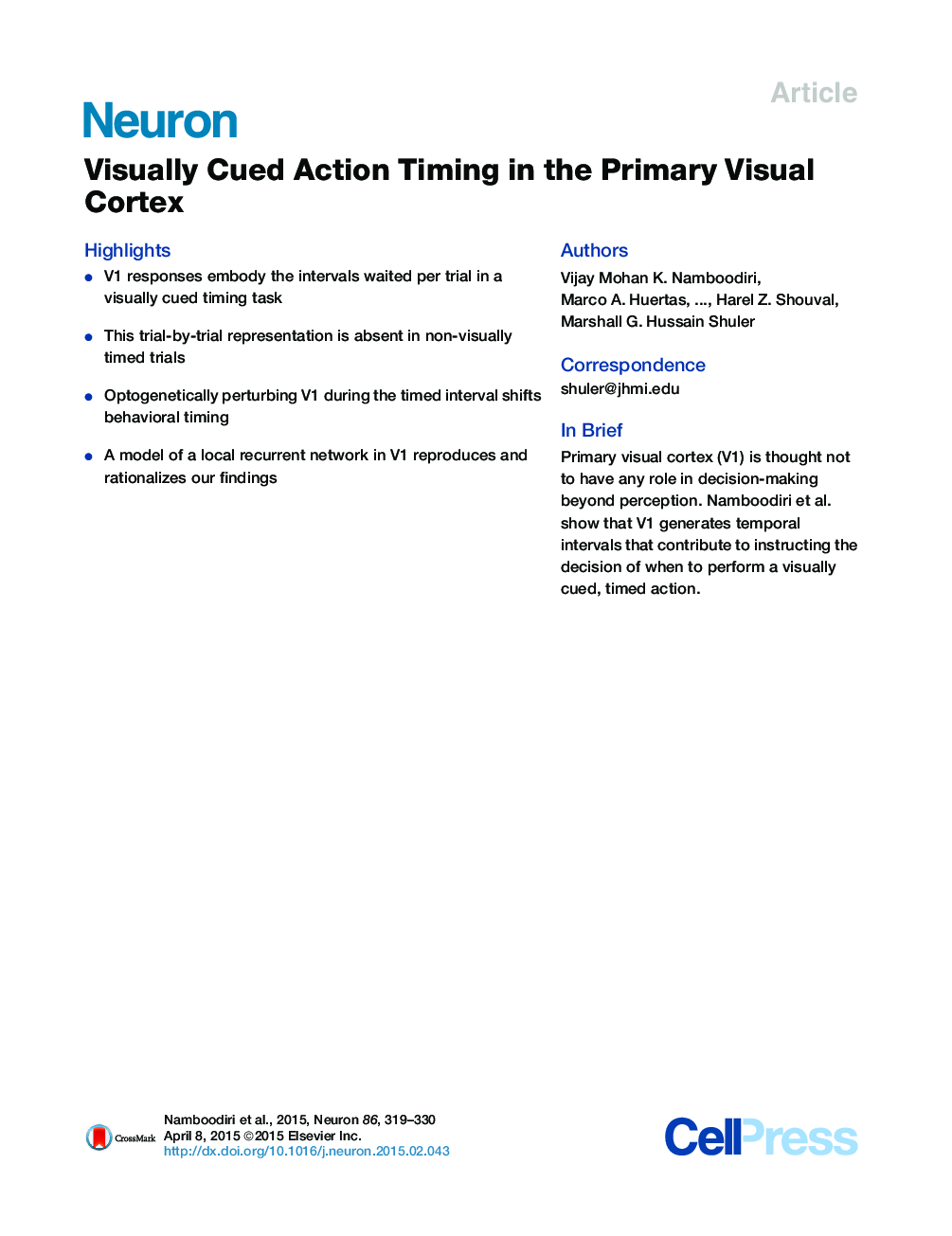| Article ID | Journal | Published Year | Pages | File Type |
|---|---|---|---|---|
| 4321015 | Neuron | 2015 | 12 Pages |
•V1 responses embody the intervals waited per trial in a visually cued timing task•This trial-by-trial representation is absent in non-visually timed trials•Optogenetically perturbing V1 during the timed interval shifts behavioral timing•A model of a local recurrent network in V1 reproduces and rationalizes our findings
SummaryMost behaviors are generated in three steps: sensing the external world, processing that information to instruct decision-making, and producing a motor action. Sensory areas, especially primary sensory cortices, have long been held to be involved only in the first step of this sequence. Here, we develop a visually cued interval timing task that requires rats to decide when to perform an action following a brief visual stimulus. Using single-unit recordings and optogenetics in this task, we show that activity generated by the primary visual cortex (V1) embodies the target interval and may instruct the decision to time the action on a trial-by-trial basis. A spiking neuronal model of local recurrent connections in V1 produces neural responses that predict and drive the timing of future actions, rationalizing our observations. Our data demonstrate that the primary visual cortex may contribute to the instruction of visually cued timed actions.Video Abstract To view the video inline, enable JavaScript on your browser. However, you can download and view the video by clicking on the icon belowHelp with MP4 filesOptionsDownload video (11538 K)
